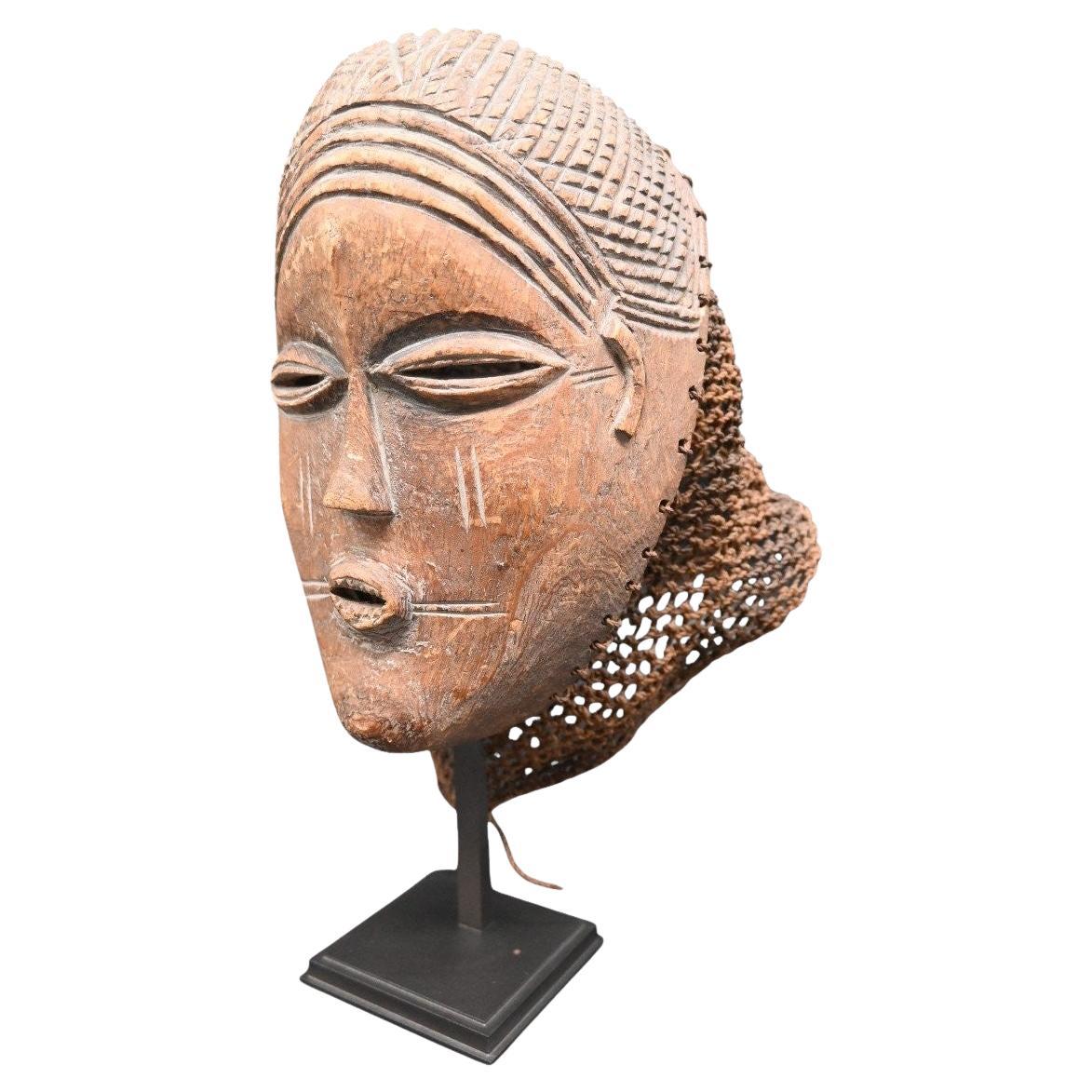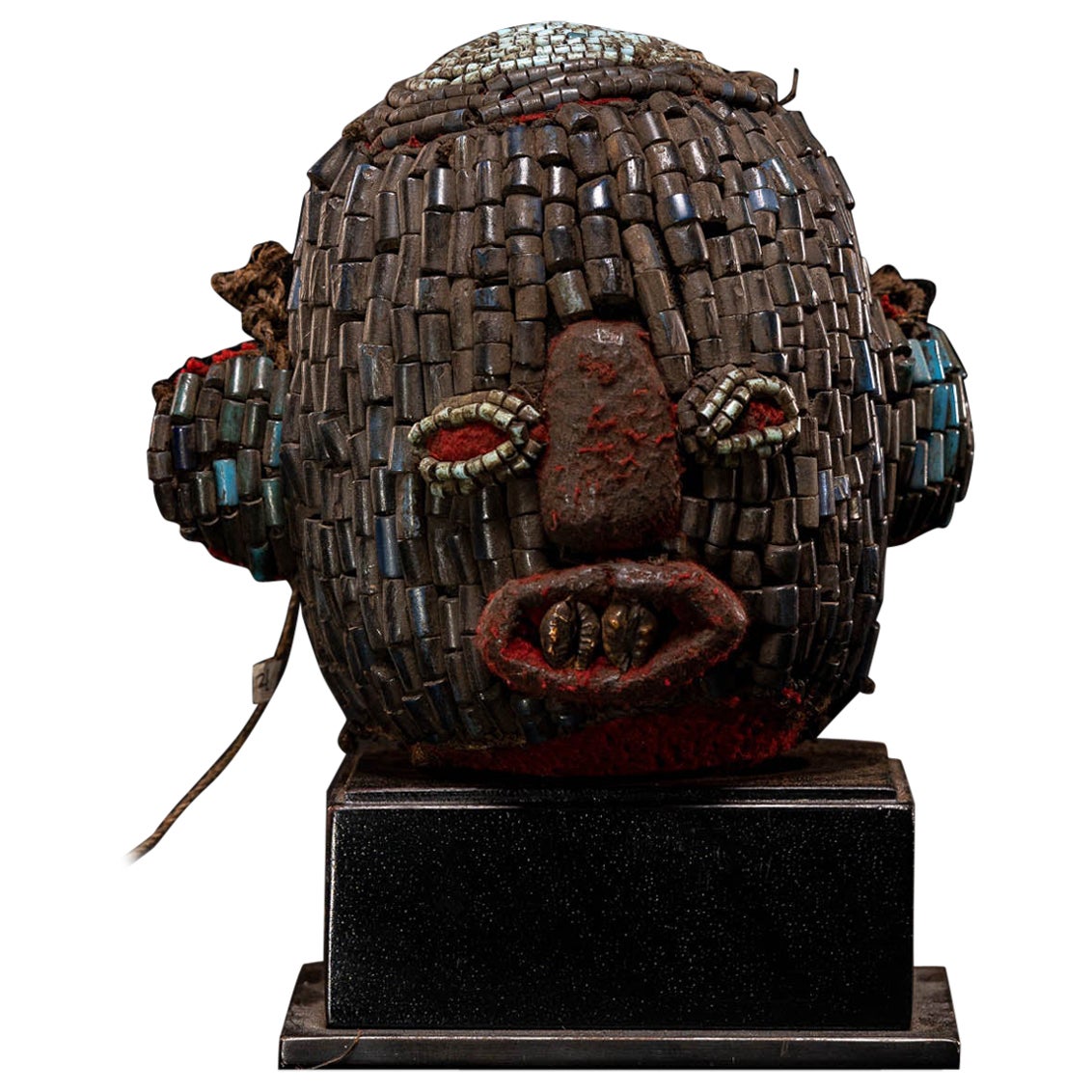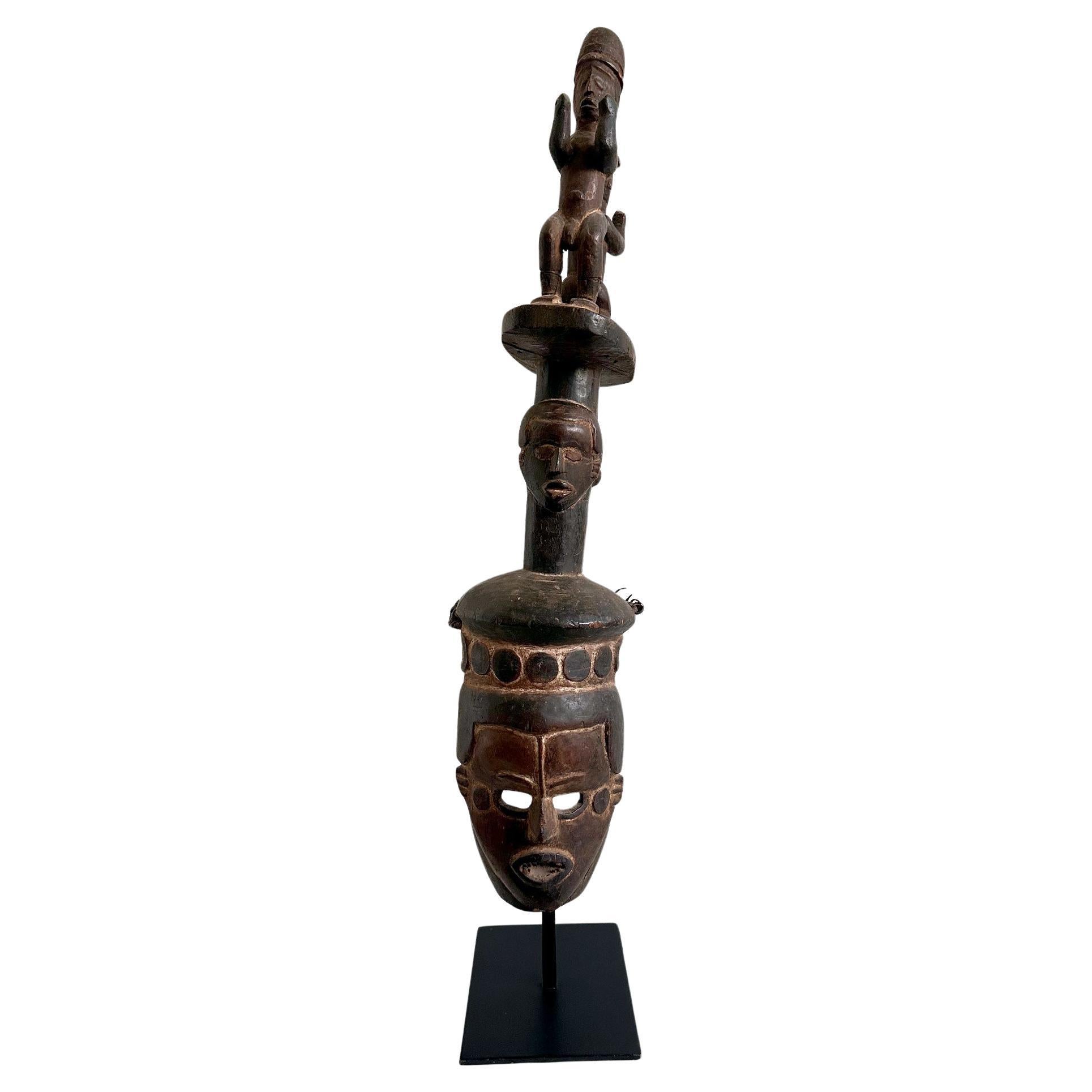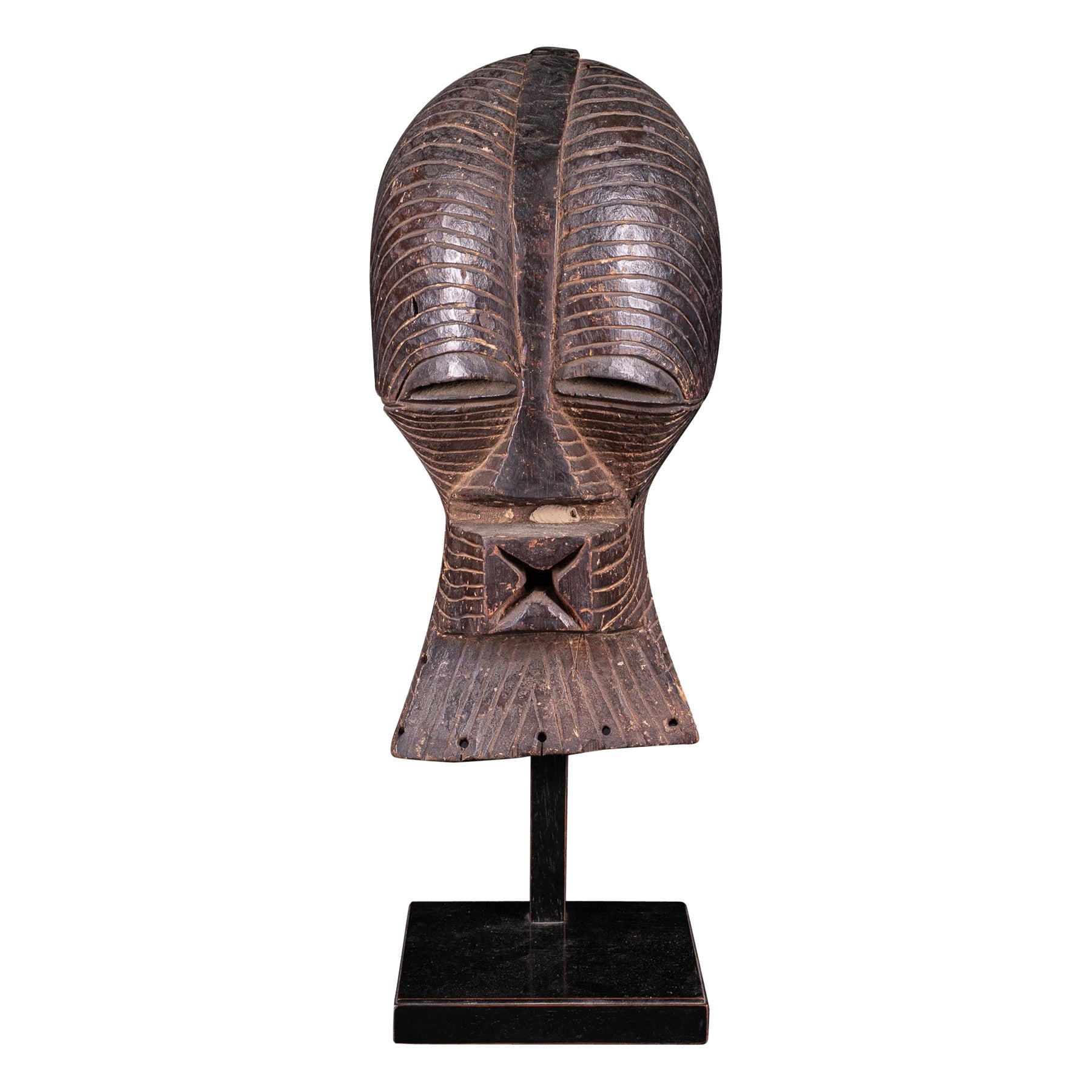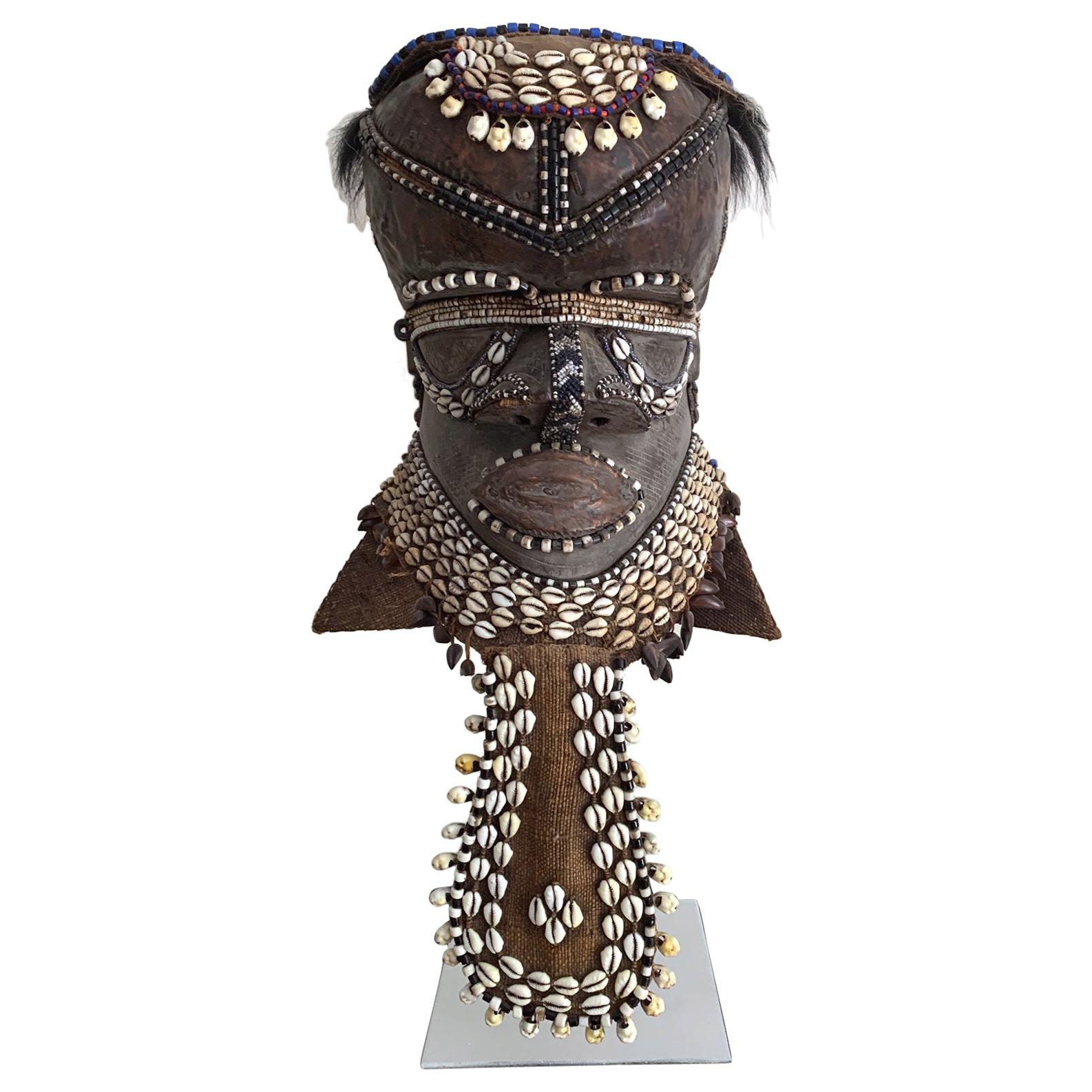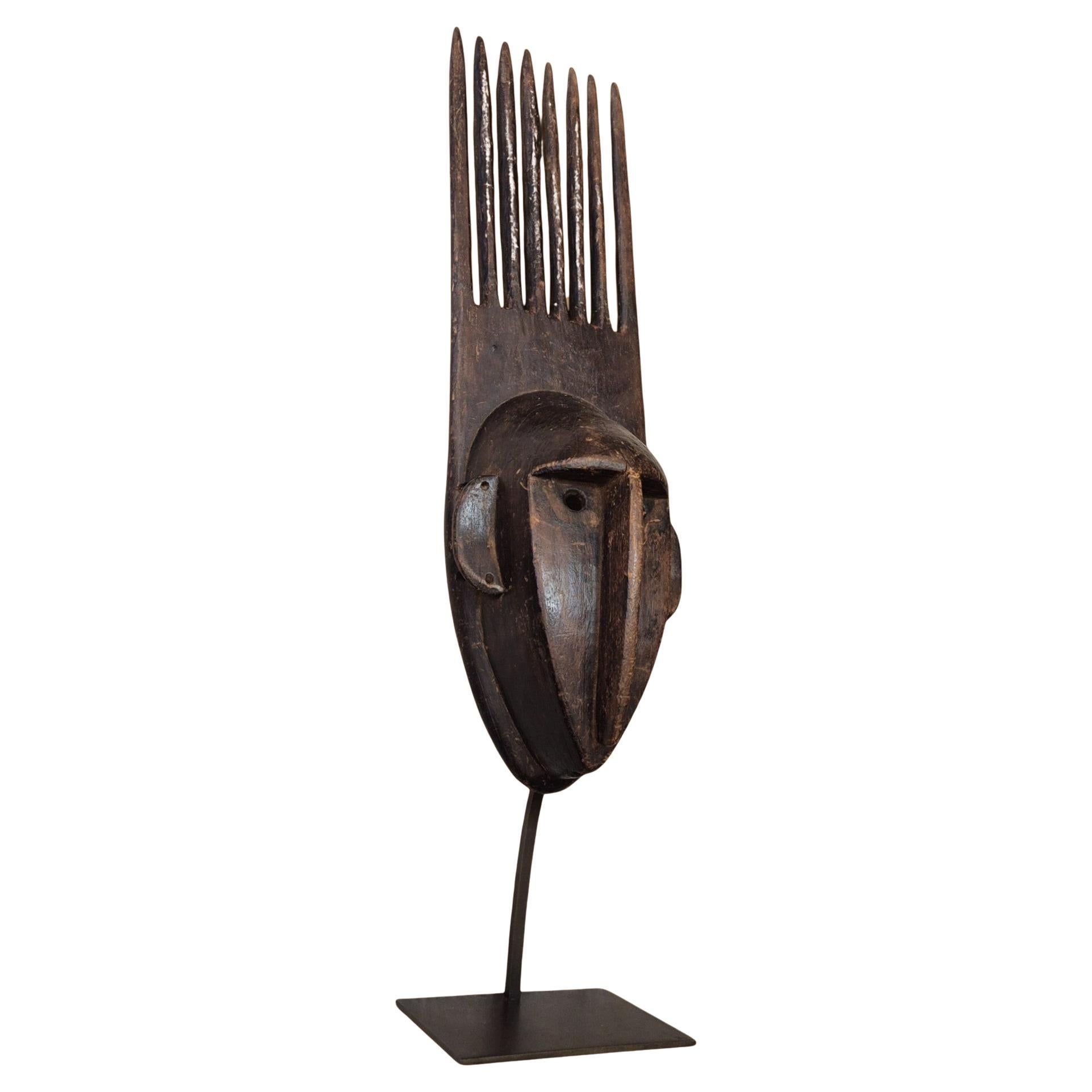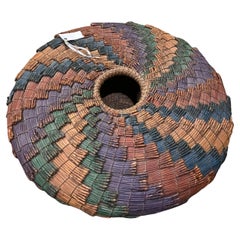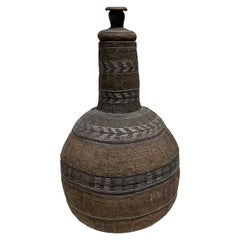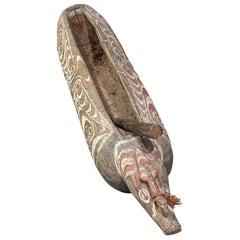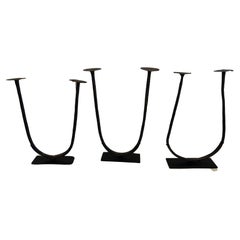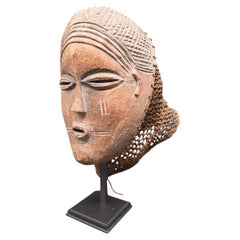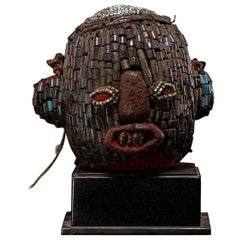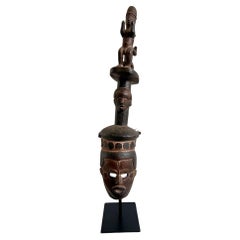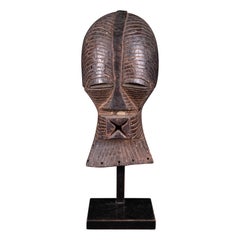Items Similar to African beaded head from Cameroon
Want more images or videos?
Request additional images or videos from the seller
1 of 5
African beaded head from Cameroon
$595
£449.75
€516.84
CA$828.53
A$921.71
CHF 483.17
MX$11,263.07
NOK 6,152.59
SEK 5,791.81
DKK 3,858
Shipping
Retrieving quote...The 1stDibs Promise:
Authenticity Guarantee,
Money-Back Guarantee,
24-Hour Cancellation
About the Item
This is a wonderful colorful beaded head made by the people of Cameroon Africa and put on a lucite stand
- Creator:Cameroon Tribe (Maker)
- Dimensions:Height: 8.5 in (21.59 cm)Width: 3.25 in (8.26 cm)Depth: 3.25 in (8.26 cm)
- Materials and Techniques:
- Place of Origin:
- Period:
- Date of Manufacture:2000
- Condition:Wear consistent with age and use. Lucite stand made for artifact.
- Seller Location:Winnetka, IL
- Reference Number:Seller: Bs1stDibs: LU1291240493072
About the Seller
4.7
Vetted Professional Seller
Every seller passes strict standards for authenticity and reliability
Established in 2010
1stDibs seller since 2015
295 sales on 1stDibs
Typical response time: 2 hours
- ShippingRetrieving quote...Shipping from: Winnetka, IL
- Return Policy
Authenticity Guarantee
In the unlikely event there’s an issue with an item’s authenticity, contact us within 1 year for a full refund. DetailsMoney-Back Guarantee
If your item is not as described, is damaged in transit, or does not arrive, contact us within 7 days for a full refund. Details24-Hour Cancellation
You have a 24-hour grace period in which to reconsider your purchase, with no questions asked.Vetted Professional Sellers
Our world-class sellers must adhere to strict standards for service and quality, maintaining the integrity of our listings.Price-Match Guarantee
If you find that a seller listed the same item for a lower price elsewhere, we’ll match it.Trusted Global Delivery
Our best-in-class carrier network provides specialized shipping options worldwide, including custom delivery.More From This Seller
View All20th Century African Woven Basket
Located in Winnetka, IL
Handwoven African basket made from natural plant fibers, featuring a tightly constructed structure and bold geometric patterning. The surface is composed of dyed reeds in rich tones ...
Category
Mid-20th Century African Folk Art Decorative Baskets
Materials
Natural Fiber
Oromo Igbo African Gourd
Located in Winnetka, IL
This African piece was made by the oromo igbo people of ethiopia
It is a gourd with weaved fiber and metal covering it with intricate design and patterns
It has a lid with it which is usually not found
It definately has age but not sure of its exact year
This vessel is a lovely african artifact...
Category
Early 20th Century Ethiopian Tribal Art
Materials
Metallic Thread
20th Century New Guinea Drum with Drumstick
Located in Winnetka, IL
Hand-carved wooden drum from New Guinea, featuring intricate painted patterns in white, red, and black across the cylindrical body. The surface displays symmetrical curvilinear motif...
Category
Mid-20th Century Guinean Animal Sculptures
Materials
Hardwood
Set of 2 Kusu (Tribal) currency from Democratic Republic of the Congo
Located in Winnetka, IL
Three Kuso Currency pieces known as Boloko are from the Democratic Republic of the Congo. They are made from forged iron and were used as currency in commerce. Today, they are sculp...
Category
Early 20th Century Congolese Tribal Tribal Art
Materials
Iron
Senufo stool or side table from the Ivory Coast
Located in Winnetka, IL
A Senufo stool or side table made from one piece of wood from the Ivory Coast.
Category
20th Century African Stools
Materials
Wood
Small African Senufo stool made from one piece of wood
Located in Winnetka, IL
This Senufo stool is carved from one piece of wood.
Category
Mid-20th Century African Stools
Materials
Wood
You May Also Like
Mwana Pwo Mask From The Chokwe / Tshokwe Tribe, Dr Congo
Located in Bilzen, BE
A serene-looking Mwana Pwo chokwe mask mounted on a custom-made base which is included
Early 20th century
The Mwana Pwo mask was the personification of the ideal woman among the Cho...
Category
Early 20th Century Congolese Tribal Tribal Art
Materials
Wood
Bamileke Old Anthropomorphic Trophy Head Embroidered with European Glass Beads
Located in Leuven , BE
Bamileke Old Anthropomorphic Trophy Head embroidered with European
Glass Beads, Grasslands People, and Cameroon.
Private collection Brussels
Worn by chiefs and other notables on cer...
Category
20th Century Cameroonian Figurative Sculptures
Materials
Wood, Beads
Tall African Ibibio Head Mask with Polychrome Nigeria Provenance
Located in Atlanta, GA
A tall Ibibio wood mask from Nigeria, Africa, circa 20th century. The head mask was carved in with a frontal face with pierced eyes and a gapping mouth. On his head, a stylized hat ...
Category
20th Century Nigerian Tribal Figurative Sculptures
Materials
Rattan, Wood
Female Kifwebe Mask with old collection label, Luba-Songye People, DR Congo
Located in Leuven , BE
Traditionally, Kifwebe masks were created and worn by members of the secret masking society, Bwadi Bwa Kifwebe, of the Luba and the Songye People living in the central part of the Co...
Category
20th Century Congolese Tribal Art
Materials
Wood
African Kuba Helmet Mask on Stand
Located in Atlanta, GA
A Helmet Mask known as Bwoon from the Kuba Tribe in the Kasai region of Democratic Republic of the Congo, Central Africa circa mid-20th century. The carved wood mask was decorated with copper plates on the face, and lavished embellished with trade beads, raffia cloth with cowrie shells and hanging seed pods, fur possibly from monkey. The surface and the interior both display good patina indicates a native use (contact rubbing) and age.
Bwoom is one of three types of royal Kuba masks...
Category
20th Century Congolese Tribal Masks
Materials
Copper
Bamana N'tomo mask, Mali, 20th century
Located in NICE, FR
Bamana N'tomo mask, Mali, 20th century
"Generally surmounted by three to eight horns forming a comb, the N'tomoface mask refers to a moment of compulsory education given to uncircumcised young boys in certain West African societies. The mask's discreet, even absent, mouth emphasizes the behavior expected of them in their future adult life after training: controlling and measuring their words, knowing how to keep quiet, preserving secrets and enduring pain in silence."
Excerpt from Masques du N'tomo, Marc Ladreit de Lacharrière Collection, Musée du Quai Branly Jacques Chirac, France.
The Bambara, or Bamana, live in central and southern Mali. Their name means “unbeliever” and was given to them by the Muslims. Animists, they believe in the existence of a creator god called Ngala, who maintains the order of the universe and coexists with another androgynous god called Faro, master of the Word, who gave all qualities to mankind and makes the fruits of the earth grow. Traditional Bamana art objects are closely linked to agrarian rites.
The Bamana dance these masks during initiation and circumcision ceremonies for young boys in the Ntomo society. The face, with its vertical outgrowths at the top, adopts geometric features beneath a rounded forehead, including an imposing busted nose, as the Bamana favor this organ in their statuary as it evokes sociability and clan cohesion. Indeed, during choreography, the dancer frequently touches the nose of the mask.
As teaching aids for candidates, masks from societies accessible to young boys and adults, such as the N'tomo, Korè and Ci wara...
Category
Vintage 1930s Malian Tribal Tribal Art
Materials
Wood
